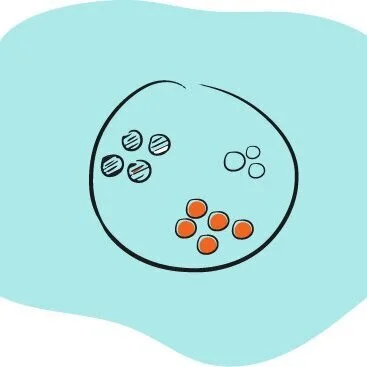RESEARCH TOOL CANVAS
A template to help you create context specific research tools
OUTSIDE-IN PERSPECTIVE
Explore what others already know, using reports and studies that already exist.
$100 Test
This tool uses fake money to understand how customers prioritize their needs and wants.
Herzberg Two Factor Authentication
A dual-factor tool that helps get to the root of motivation in the workplace.
Open ended questions
Helps gain an understanding of underlying reasons, opinions, and motivations of the customer.
observational skills
Dig deeper through your customers’ facial expressions, body language & the environment in which they work.
Listening skills
Tips to practise active listening.
sketchnoting
Use sketchnotes to synthesize research, communicate the gist of customer interviews, explain a concept etc.
love-do matrix
A conversational approach to understand the customer’s passions and skills.
EMPATHY MAP
A go-to tool that can help you empathise with customers, synthesize your observations from the research phase and, draw out non-obvious customer insights.
WHY - HOW LADDERING
A research synthesis tool to dig deeper and identify underlying issues in a challenge
ICEBERG MODEL
A system thinking tool that helps you go beyond surface-level understanding and get to the deep-rooted causes underlying it.
JOURNEY LINE
Visual approach to depicting a customers sequence of events against an axis of customer emotion.
ECOSYSTEM MAP
A graphical representation of the customer’s environment, systems they use and the relationships that influence their behaviour and decisions.
JObs to be done
Define customer segmentation based on the higher purpose for which they buy products, services and solutions.
PROBLEM STATEMENT
It is a description of the problem written from the customers point of view, this statement helps identify & articulate the right problem to solve in a meaningful way.
PROBLEM REFRAMING TOOL
A tool that helps you shift perspectives and create new possibilities
CUSTOMER BENEFIT METRICS
Defining why your customer would choose you over your competition. Articulate how you would measure your solution(s) against it.
HOW MIGHt WE
Framing the challenge creatively in the form of a question helps you move from conclusions or challenges, to new ideas and possibilities.
BIOMIMICRY
Drawing inspiration from nature through analogies, that push the thinking and allow you to explore new ideas
EMERGING TECH
Using emerging technology, their applications and underlying concepts, as inspiration to generate new ideas.
NEUE KOMBINATIONEN
This is used when you want to use inspiration from leading edge startups to build ideas. By using these sets of features & functions (building blocks), you can explore new avenues for solutions.
OSBORN’S CHECKLIST
Asking questions about your existing solution and imagining new uses or applications of it is a great way to expand your idea or completely transform them.
Question storming
Asking the right questions & questioning the status quo will help you come up with innovative & breakthrough solutions
CRITICAL ASSUMPTION TESTING
By identifying key underlying assumptions in a solution, you can reduce the risk of disruptive, unproven and edgy concepts by getting confirmation of validity or plausibility of these assumptions.
storyboard
A visual tool to build a narrative around your solution. It helps you get feedback and refine your concept with customers.
EXPERIMENt CANVAS
The Experiment Canvas helps you design multiple experiments against each articulated key assumption. Make an experiment card for each key assumption.
message map
A technique that helps you create an elevator pitch to communicate your concept in less than 30 seconds.
SKETCHNOTING
Sketchnoting, also known as visual notetaking, is a graphic process through which an individual can record their thoughts with the use of illustrations, symbols, structures, and texts.
TARGET TOOL
Use this tool to aid decision making, to narrow down from multiple choices.
AFFINITY MAPPING
A tool that gathers large amounts of data (pain points, opinions, issues, ideas) and organizes them into groups or themes based on their natural relationships.
THINK INDEPENDENTLY TOGETHER
Traditional brainstorming is not effective, the loudest voices and the first few thoughts dominate the conversation. Individuals contribute best when they have a safe and uninterupted space to share.
FOG TOOL
Let’s evaluate if you have truly built empathy for the customer. FOG is an abbreviation of Facts, Opinions & Guesses.
ONE THING
A simple and effective self reflection tool to capture the most important learning from an experience.
Additional Tools
Heuristic Design Principles
Pensaar Design's 10 heuristic design principles across Experience Design, Interaction design & Visual Design, curated from our accumulated experiences over the years.
backcasting tool
Backcasting is a visioning tool that helps identify the opportunities and obstacles to achieve a desired future outcome.









































